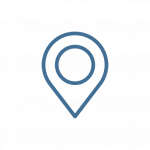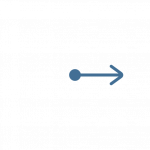Hi ETEC 540 66A! My name is Jocelyn and I live in Vancouver, BC. I work in learning and organizational development and have been in this field for just over eight years. This course (ETEC 540) is my fifth course in the MET program.
Here’s what’s in my bag – or more accurately, what’s in my pockets, since I don’t usually carry a bag!
Items
When I’m out and about, I usually have just a few items on me.
Click on the items in the interactive image below for details.
Text, text technologies, literacies, and narrative
In reflecting on these items, a few themes jump out at me:
1) I rely on technology for day-to-day tasks, but still bring along their more dated counterparts as backup.
 After typing out the descriptions of the items above, I’m realizing most of these items are backups. With the card apps, I don’t need most of the cards in my wallet; with the smart lock app, I don’t need the key to my condo; the flash drive is a backup of files I already have on the cloud. (In addition, the $20 bill in my wallet is for in case I go somewhere that takes cash only, which almost never happens, and the contact lenses and mask are also backups.) I will have to reflect on this.
After typing out the descriptions of the items above, I’m realizing most of these items are backups. With the card apps, I don’t need most of the cards in my wallet; with the smart lock app, I don’t need the key to my condo; the flash drive is a backup of files I already have on the cloud. (In addition, the $20 bill in my wallet is for in case I go somewhere that takes cash only, which almost never happens, and the contact lenses and mask are also backups.) I will have to reflect on this.
2) Most of my items are enabled by technology.
To expand on my reflections above…
-
- Phone: The apps on my phone enable digital communication with other people and systems. For instance, my smart lock app is connected to the smart lock on my door. The app pushes notifications to my phone if there’s any activity with the door. I can still use my key to unlock the door if the smart lock is offline.
- Flash drive: The flash drive requires a computer or certain digital devices to access the files on it.
- Wallet: The cards interact with their respective digital systems to execute tasks. I do not have insight into how exactly these cards work with the systems at the organizations that provided me with these cards, but with these cards I am granted access to certain affordances of these technologies.
- Keys: The condo key fob uses a radio-frequency identification (RFID) system to provide access to the main entrance, garage, and storage locker room of my building, as well as to my floor via the elevator. The car key fob allows me to unlock the car doors and to start the engine.
3) I would say the items themselves don’t look too different compared to their equivalents from 15 years ago, but the underlying literacies associated with these items have evolved.
For instance:
-
- Phone: In 2007, I would text friends and family using T9 predictive text technology via SMS, whereas now I use an on-screen keyboard with autocorrect and via over-the-top messaging apps. The word “text”, as Berkowitz highlighted, was a “noun meaning a book or other piece of writing … but now it’s a verb, which means to send a text message” (Berkowitz, 2020). As a side note, in looking up the word “autocorrect” in the OED, I learned that the first documented usage of the word was in 1981 in reference to a typewriter; for clarity, the intended meaning here is the one referenced in the OED under the 2019 Computing entry (Oxford University Press, 2021a). In addition, in 2007 I did not use the apps mentioned above, and a quick search on Wikipedia confirmed the apps were not available at the time (Apple Wallet, 2022; August Home, 2021; Google Maps, 2022; WhatsApp, 2022). In 2022, the use of these apps require certain technological literacies.
- Extra mask: In 2007, masks were not common outside of East Asia (Ives, 2022), and I did not wear or carry masks back then. That has changed since the Covid-19 pandemic – and notably, the word “Covid” itself, in reference to the pandemic, appeared in 2020 (Oxford University Press, 2021b). In looking up the terms “mask” and “masking” in the OED, I came across two references added in 2020 that alluded to “mask[ing] up” related to the pandemic (Oxford University Press, 2021c). I also looked up “mask” in Google Trends and noticed an uptick in early- to mid-2020 (Google Trends, n.d.), which coincides with the start of the pandemic.
4) There are both direct and indirect clues in these items as to the places I inhabit and the activities I take up.
 The car key fob, condo key fob, and my earlier reference to Google Maps particularly stand out to me – these are new additions for me. My partner and I recently moved from downtown Vancouver, where we had been for years, and we were used to getting around on foot and taking short commutes on transit. We now live in a suburban area in Vancouver proper (which may be suggested by the car key and the lack of a transit fare card in my items) and my work went remote (which may be suggested by the lack of an access card). There’s not much in this area and I work and do school remotely, so I don’t leave home often.
The car key fob, condo key fob, and my earlier reference to Google Maps particularly stand out to me – these are new additions for me. My partner and I recently moved from downtown Vancouver, where we had been for years, and we were used to getting around on foot and taking short commutes on transit. We now live in a suburban area in Vancouver proper (which may be suggested by the car key and the lack of a transit fare card in my items) and my work went remote (which may be suggested by the lack of an access card). There’s not much in this area and I work and do school remotely, so I don’t leave home often.
5) I would say these items are consistent with the image I project.
 I appreciate technology, I can be overly cautious at times (all the backups!), and I stick with the essentials.
I appreciate technology, I can be overly cautious at times (all the backups!), and I stick with the essentials.
Present vs. past and future
Present vs. past:
 I’m noticing that the equivalent of these items from 15 years ago would’ve been less integrated compared to their 2022 counterparts. For instance, in 2007, I would not have been able to easily view purchases on my credit card in realtime (whereas I can now via my banking app on my phone) or start my car without its key (whereas I can now via my car app).
I’m noticing that the equivalent of these items from 15 years ago would’ve been less integrated compared to their 2022 counterparts. For instance, in 2007, I would not have been able to easily view purchases on my credit card in realtime (whereas I can now via my banking app on my phone) or start my car without its key (whereas I can now via my car app).
Present vs. future:
 If an archeologist far into the future were to examine my items from today (2022), I imagine their observations would be similar to mine today reflecting on my items from 15 years ago, in the sense that many of these items work relatively independent of one another. In other words, I believe that as technology continues to advance, our items will become even more connected and integrated with our phones or other technology.
If an archeologist far into the future were to examine my items from today (2022), I imagine their observations would be similar to mine today reflecting on my items from 15 years ago, in the sense that many of these items work relatively independent of one another. In other words, I believe that as technology continues to advance, our items will become even more connected and integrated with our phones or other technology.
References
Apple Wallet. (2022, May 19). In Wikipedia. https://en.wikipedia.org/w/index.php?title=Apple_Wallet&oldid=1088648867
August Home. (2021, October 11). In Wikipedia. https://en.wikipedia.org/w/index.php?title=August_Home&oldid=1049358981
Berkowitz, J. (2020, April). Internet age words. North by Northwest. https://berkowitzandassociates.ca/resources/cbcs-the-word-guy/
Ives, M. (2022, Jan 15). Americans are just learning what people in East Asia already know about masks. The New York Times. https://www.nytimes.com/2022/01/15/world/china-masks-usa.html
Google Maps. (2022, May 26). In Wikipedia. https://en.wikipedia.org/w/index.php?title=Google_Maps&oldid=1089966211
Google Trends. (n.d.). Mask. Google. Retrieved May 27, 2022, from https://trends.google.com/trends/explore?date=all&q=mask
Oxford University Press. (2021a). Auto-correct, n. Oxford English Dictionary. Retrieved May 27, 2022, from https://www.oed.com/view/Entry/279594?rskey=MrN9uW&result=1#eid
Oxford University Press. (2021b). Covid, n.2. Oxford English Dictionary. Retrieved May 28, 2022, from https://www.oed.com/view/Entry/89113636?rskey=oOE0bW&result=2#eid
Oxford University Press. (2021c). Mask, v.4. Oxford English Dictionary. Retrieved May 27, 2022, from https://www.oed.com/view/Entry/114612?rskey=B8QbgW&result=4#eid
WhatsApp. (2022, May 25). In Wikipedia. https://en.wikipedia.org/w/index.php?title=WhatsApp&oldid=1089793988
Hi ETEC 540! Which of these items do you also have in your bag, but use and/or interpret differently?

Hi Jocelyn,
Very creative use of Genial.ly to give an in depth look at each item without cluttering up the space. We seem very similar in our packing styles, as I also like to only cary around what I need and compress everything into as small a space as possible.
Thanks for the comment Erin! I just took a peek at your post and we do have very similar packing styles!
I like how you highlighted efficiency in your post. That is something I value highly as well. I hadn’t considered this in reflecting on my items, but I can definitely see how that carries over into my items.
I’m jumping over to your post now — see you there!
Hi Jocelyn,
I also second Erin’s comment about your clever use of genial.ly! I wish I had thought of that! What I love about it is that it also greys out the other items in your bag and helps me focus on one item at a time. I also noticed that you carry around a mask similar to myself. I thought I was being paranoid by including it in my every day bag, especially with COVID rules relaxing in BC. However, after reading your thoughtful post, it made me realize that including this item is a “trend” and not a bizarre action on my part. It almost normalizes and makes sense of why I do it.
I appreciated reading your references to our first week’s readings. Additionally, your reflection on the Apple apps that exist today compared to 2007 made me truly realize the exponential changes in our technologies! How can we ever keep up with it all?
As always, it is a pleasure to read your insightful posts and I am glad that we are in another course together!
Hi Junel!
Thanks again for introducing me to Genially!
Regarding the mask, I don’t think it’s bizarre at all. I would personally feel comfortable without one (I’m relatively young and healthy and also double-vaxxed + boosted), but I still wear one when I go out, to avoid chances of indirectly passing Covid along to those who are immunocompromised, in case I’m asymptomatic. I’m just doing what feels right to me. :)
Phones really have changed quite a bit compared to 2007, which I hadn’t thought about before this task!